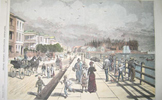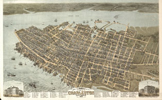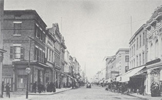Inside the Charleston city limits in 1886 lived 60,145 people: 27,605 whites and 32,540 blacks. The city was very progressive in some ways—streetcars, a paid fire department, electric fire alarms, a gas works, an electric lighting plant, and running water for some households—and behind the times in others, for instance it had no sewage system. Many people relied on cisterns or public artesian wells for their drinking water. A few families and businesses had telephones, but the service was so rudimentary and rare that most people still sent letters to communicate with friends across town.
Charleston was served by four major hospitals--the U.S. Marine Hospital, Roper Hospital, St. Francis Infirmary, and the City Hospital--and one medical school, two nursing schools, and sixty-nine physicians and surgeons.



